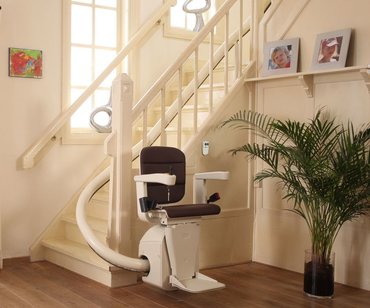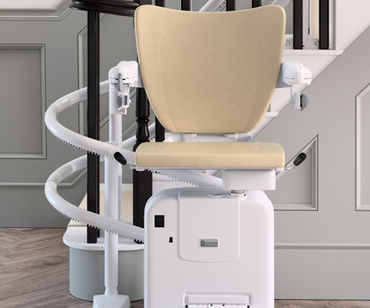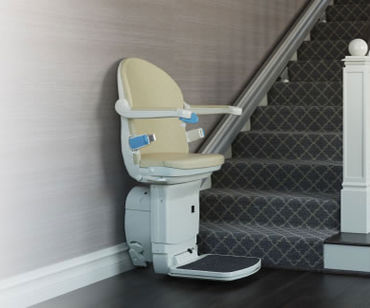How the UK high streets could be more accessible

A British high street is a unique place, a centre of the community, a great space to pass the time for a coffee or pick up shopping. However, there are concerns that the high streets in the UK are not accessible enough to everybody, and not only does it make life more difficult, but it also stops people with limited mobility from venturing out.
There have been reports that crossing times are too short, there are not enough dropped kerbs or that shops are not accessible. This can stop people who rely on mobility aids like a mobility scooter or a purpose-built stair lift from not only enjoying their time on the high street but stop them from patronising an inaccessible area or business. Whilst most people look at accessibility as being access to a building or shop, other factors like the layout of that shop is often ignored.
There are lots of ways that this can be improved and by speaking to people with personal experience, it highlights where the issues lie.
Inside the shops

Perusing stock is an enjoyable part of the shopping experience, but too much stock or businesses not taking wheelchair users into consideration can hamper this. Zec Richardson from the blog Sat on my Butt spoke of his personal experience:
“Obviously in many high street shops space is limited and they want to make sure they can fit in as much stock as they can and they employ people sometimes to advise on product placement to improve sales and design so that it encourages people further into the shop.”
“Unfortunately I have come across many shops where it is possible for me to enter the shop, but once inside it is impossible to get around. This is worsened further in the lead up to Christmas when shops want to fit in even more stock and we find units placed in the middle and on the end of the aisles.”
“One shop that was always difficult for me was the Card Factory, it was accessible but the aisles were so narrow that if someone was stood looking at cards, I couldn’t get past and so it was an “excuse me” and they had to walk to the end of that aisle to let me past. That is awkward, it's embarrassing and when it is busy and three to ten people are stood looking at items, it is impossible to manoeuvre. So I would be sat outside and my wife would go in and approach the window holding a card and gesturing for my approval or disapproval on the card. So I think that more emphasis is needed on interiors of shops, restaurants etc. There is no point being able to get through the door if the interior layout is not wheelchair accessible.”
Sassy from Thinking out loud agrees that getting around inside shops can be a chore:
“Putting things into perspective, entering a shop as a wheelchair user, or even a cane user is the easy part. Navigating through the very tight aisles of clothing, rails and shelves is something that every store, cafe and High Street needs to consider; implementing wider aisles and a strategic layout.”
“Cafes are generally the worst at this. Too many tables are squashed together meaning your wheelchair may not be able to manoeuvre rounds the dozens of people and tables, as a blind person using a cane it could mean you accidentally catch someone with your handbag or your cane goes under the table and before you realise it you’ve walked up into someone’s personal space.”
Facilities being available

There is a huge disparity in what different businesses mean by accessible, and without proper guidelines, this can lead to confusion and awkward moments. When businesses do have the facilities, if space is underused it will also be repurposed as storage or a cloakroom and this can leave those with limited mobility without proper provision.
Zec has a personal experience of facilities that are promised not being provided:
“I also went to a restaurant for a meal for my mum’s birthday a while back, we had phoned ahead to make sure it was accessible and had a disabled toilet and was told that it did. During the meal I needed to use the toilet and asked where it was, to get there they had to move three tables over and they were occupied with people eating, as a disabled person I don’t want that attention, the embarrassment. When I got there the toilet was locked, so I sat and waited and after 10 minutes I ask a member of staff who then tells me it is locked as it is also the staff cloakroom!”
Entrances
Actually entering a building can cause difficulties even if it is level or has a ramp. If doorways are not wide enough or the doors are not automatic, a person with limited mobility may not even be able to enter. This coupled with insides stuffed with products and lots of people may leave people with limited mobility avoiding high streets altogether.
Sassy finds that many businesses need to improve in this area:
“As a wheelchair user, I found that the High Street could certainly be improved by making the entrances flat or creating ramps. There were times where I had to leave my wheelchair downstairs because there were only stairs/escalators available… No lifts. For someone with some mobility like me it was painful, but at least I had the luxury of going upstairs, this is not the case for most wheelchair users using the High Street. In some instances, it may be where the toilets or changing rooms are.
This can leave everyone involved a little embarrassed or flustered. If you pair that with toilets either being up/down a flight of stairs or over the other side of the cafe… Being part of the community can feel quite isolating and stressful.”
To read more about accessibility, visit our news section or read some of our other accessibility articles below.
https://www.companionstairlifts.co.uk/news/how-to-make-the-workplace-accessible
https://www.companionstairlifts.co.uk/news/new-plans-to-improve-accessible-housing
https://www.companionstairlifts.co.uk/news/norfolk-broads-named-as-accessible-holiday-destination
https://www.companionstairlifts.co.uk/news/outdoor-theatre-event-wins-accessibility-award
This news article is from Companion Stairlifts. Articles that appear on this website are for information purposes only.
Image Credit: Doc Searls



